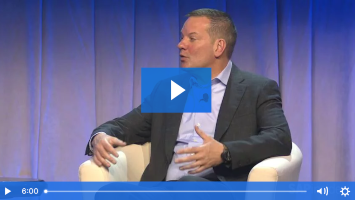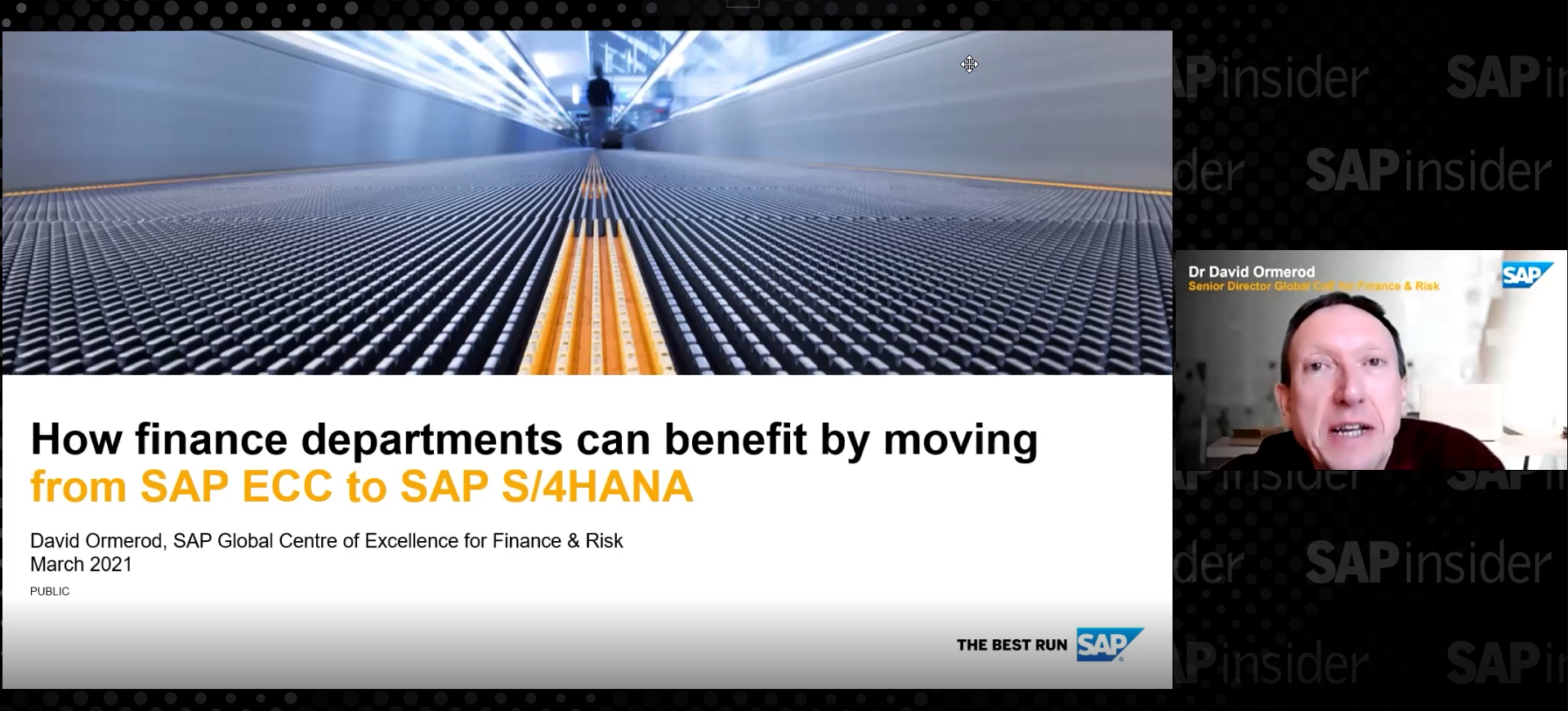Take Finance into the Digital Age
From Static Reports to Instant Insight
Q: What does a digital economy mean for the finance organization?
A: Any organization that is making the transition to become a digital business must prepare the finance functions accordingly. Running on manual data entry, batch processes, and static reports ignores the fundamental changes in an economic environment that prioritizes flexibility and immediacy. The central role of finance requires that the finance organization spearhead the digital transformation, especially because business models and processes that finance has relied on for decades are becoming obsolete seemingly overnight. This rapid pace of change is unprecedented, and while it presents challenges for companies that must re-examine longstanding business models and processes, it also presents limitless opportunity. In meeting these challenges to become digital, companies understand that by making that leap they can often create industry disruption.
But this cannot be done by simply investing in new technology and making do with the old ways of doing business. If you want to steer your company in this highly volatile environment, you need to have a clear roadmap that not only shows where you are, but also the road ahead. Providing such a roadmap means putting instant insight into the hands of decision makers, giving them the right information, anytime and anywhere. You also need processes that allow you to react to changing conditions in an agile way.
From a technological perspective, the platform and tools are there to make this happen. SAP S/4HANA Finance1 and the joining together of in-memory computing with a new architecture helps companies process, present, and analyze information in a far more flexible and more dynamic way than ever before. Combined with a new user interface (UI), information can more easily be put directly into the hands of decision makers. At its core, this is what it means to bring an enterprise into the digital era; moving away from static reporting to providing end users with direct, instant, and unencumbered access to data they need to make informed, educated decisions. It is about unprecedented transparency in finance. As a side benefit, the cost of manual processing decreases significantly, and compliance improves.
Q: What does finance need to do to prepare for the impact that instant insight can have for the organization?
A: It is abundantly clear that this means changing existing processes and moving away from what has traditionally been a rigid rhythm of the finance function, including planning and budgeting. Everyone knows the drill: A 30-day data entry, an end-of-month close, and activities that revolve around periodic, entrenched monthly, quarterly, or yearly rhythms. With the rapid changes to the economic environment, this isn’t sufficient anymore. If a company wants to benefit from instant insight, its data needs to be accurate anytime and its financial information needs to be instantaneous. Real-time data can lose its value if the data is not subject to closing tasks.
Instant insight, then, is not determined only by the speed with which real-time information is delivered. It can, in fact, be inhibited by inaccurate information from slow-moving financial processes. This means moving away from doing everything at the end of the period to devising real-time or continuous processes.
Q: What is the vision for how the finance function will operate in a truly digital enterprise?
A: We will see organizations arrive at a state of continuous processes. With increased agility and the ability to work faster, we will see an accompanying change of skill sets needed in the finance organization. Low-cost service centers, for example, will yield to smaller, dedicated groups of employees who are experts in their field. With far less manual entry, there will be a transition to exception-based governance that fundamentally changes process design. The same can be said from the compliance perspective; with compliance built into the system, there is less room for manual intervention, error, and even fraud. With the ability to monitor and analyze transactions in real time as they’re entered into the system, you’re enabling more than just the ability to react quickly. You’re that much closer to the next step, which is preventing fraudulent transactions from being entered in the first place. Built-in, improved compliance is very much aligned with the overall objectives of the CFO.
Additionally, the finance office will evolve into a strategic arm of the enterprise. If the classic role of finance is to be cost efficient and budget conscious, the new role of finance will transition to support the business in making the right strategic choices and swiftly implementing those changes. This in a nutshell is the impact of changing business models on finance. The finance organization becomes a partner to analyze what the new model means for the business — what are the benefits, what are the risks, and how does the enterprise mitigate the risks?
So you have real-time processes on the operational side, finance in the hands of the business delivering instant insight enabling better business performance, and an open platform and analytical capabilities for driving new business models.
Q: How does new technology help make this happen?
A: A rigid and intractable rhythm has been the default for finance because of technology limitations. Everything is done at month end rather than daily, weekly, or even several times each day because of the cumbersome manual work that has to happen to coordinate and manage the data. It’s painful to have to do this once a month. When everything an end user needs to have is readily available in the system, the user can now work digitally and in real time. So while we’ve highlighted that this is far more than a technology topic, technology is nevertheless a key ingredient to enabling this transformation, and this is the promise behind SAP S/4HANA Finance.
The core architecture of SAP S/4HANA Finance enables instant insight because it creates flexible information consumption and transparency, with SAP HANA as the unifier that brings together formerly siloed applications into one view as well as takes away the need for manual intervention in the delivery of real-time reconciled information. This means rather than each application having its own data silo, there is now a shared window and full transparency into the full dataset.
A classic example of this is the merging of planning and accounting in SAP S/4HANA, where there is no more interfacing. A company can create a planning model that has complete visibility into the master data structure without having to rebuild anything. The modern UI is an important component of this, of course, because the information loses its relevance if no one is accessing the system. By the same token, if the end user only gets a PDF, the battle is already lost, because static reports by definition aren’t privy to instant information.
I would also like to highlight the increasing importance of business networks. Interactions between buyers and suppliers will be fully digital to connect the dots between all the different documents — the purchase order, the invoice, the freight document, the bank statement — everything that is happening between buyers and suppliers can now be connected in the network. This is a very important element: When information is transmitted electronically rather than via paper documents that need to be manually captured in the system, you gain speed, reduce cost, and can avoid a lot of potential errors.
Q: What is the value of usability in the digital economy, and how does the new UI in SAP S/4HANA Finance help end users?
A: The enterprise world has borrowed from the consumer world. The rigid rhythms I’ve described were developed in an era before the smartphone and user-friendly touchscreens changed the way people access and consume information. With intuitive interfaces and immediate information now commonly accepted as the norm, the enterprise must deliver this same sophistication to the business user; this is the design principle behind SAP Fiori. With easy-to-use drop-down screens and customizable tiles, users can consume the information they need in the manner they prefer. Another key element is the ability to show this information on any device, including tablets and other mobile devices that are today the main source of information for many executives.
Q: What are the deployment options for SAP S/4HANA Finance? What feedback are you hearing from customers?
A: Mostly we hear this question about deployment broken down into cloud versus on premise, but I think it’s valuable to pull back the covers somewhat to look at this from a different perspective. It is also a matter of how to deploy the new technology in a complex and heterogeneous system landscape.
Traditionally, a large enterprise might have had several on-premise ERP systems to account for a decrease in performance as the volume of data increased. Today, that issue is largely resolved; there really is no limit anymore to having all datasets in one place. With other technologies such as system life transformation and other replication tools, real-time replication from data spread across a heterogeneous landscape into a single system is possible without a rip-and-replace project. This speaks to speed and agility, and to having the best of both worlds — the benefits of a central system without having to consolidate everything. SAP S/4HANA Finance ties together various solutions on a single in-memory platform. In addition, that flexibility is delivered on premise as well as in the cloud. We can offer both with almost the same solution scope.
Many customers, in particular the larger, more complex ones, are less concerned with how they are going to reach this new agile state — cloud or on premise — than they are with just getting there. That’s the feedback I’m getting; it’s not a question of whether to embrace the digital enterprise, it’s a question of how to get there in a way that makes the most sense for the business. We have hundreds of ongoing implementation projects right now for SAP S/4HANA Finance, with more going live every day. Everyone understands where digital is going and that old processes are on the way out.
So, while everyone understands that this is a transformation journey and there are quick wins to be had, it also needs to be known that disruption comes with changing processes, and that takes time. What does not take a considerable amount of time, however, is bringing this new platform to key decision makers to have them experience the new UI, the new analytical tools, and unimpeded access to data. For many this has already been an eye-opening experience in the sense of just seeing what this newfound transparency delivers.
This alone often creates the momentum for an organization to harmonize its master data and its governance, and begin exploring how to reap larger benefits. This is the advice I am giving everyone: Give this information as quickly as possible to key decision makers and executives, and you will see a sense of urgency start to develop very quickly.
1 SAP S/4HANA Finance was previously known as SAP Simple Finance [back]








